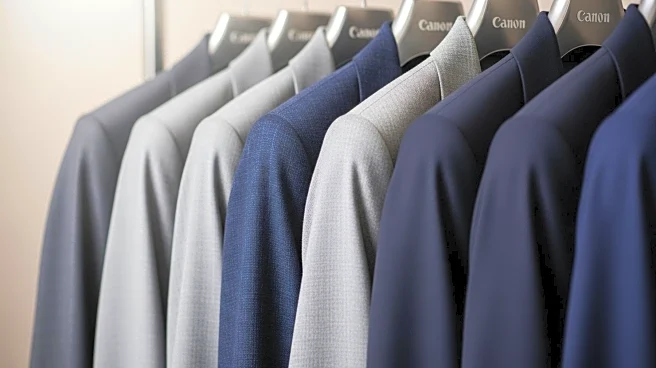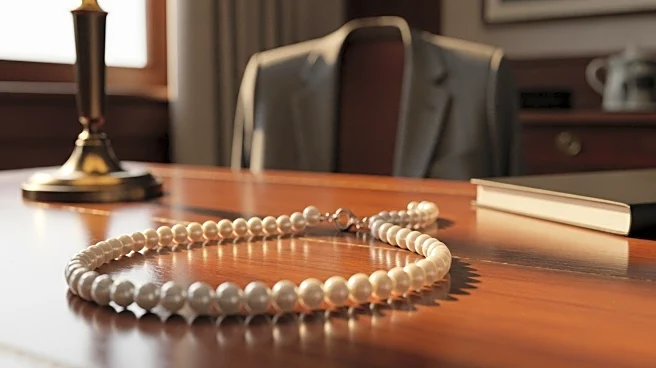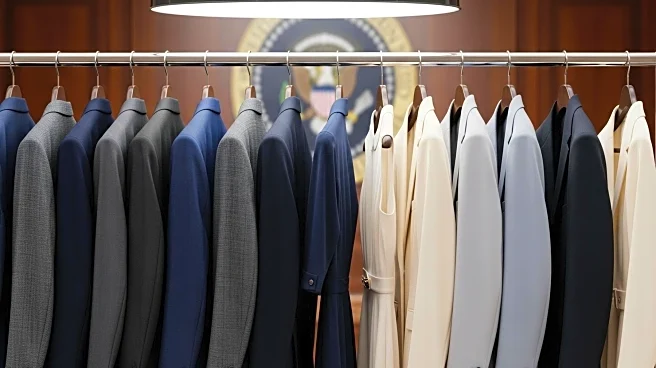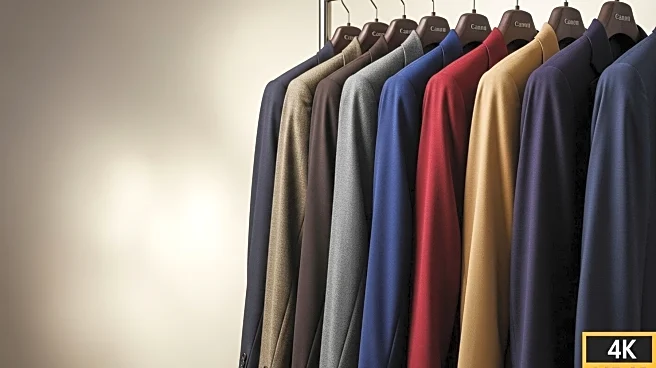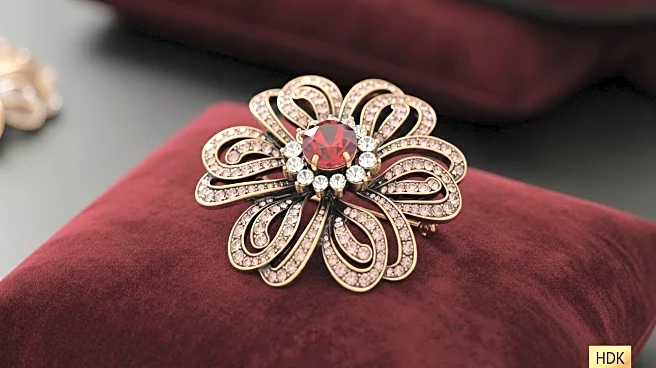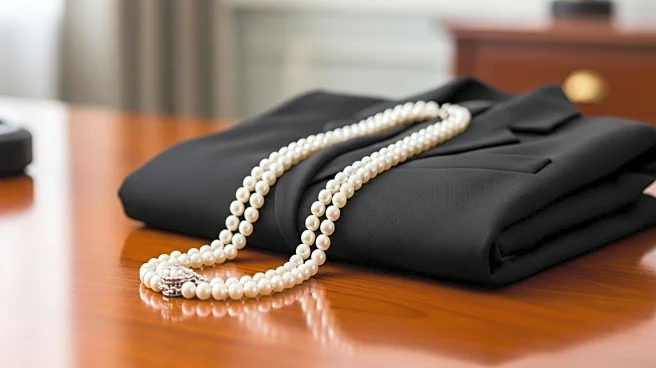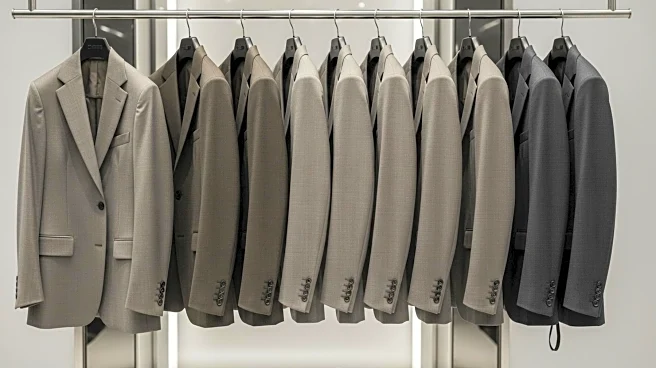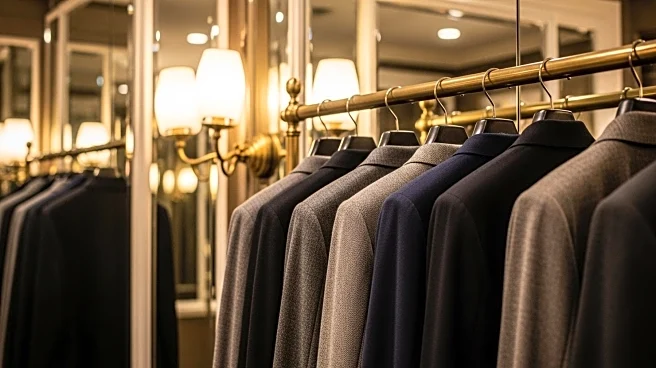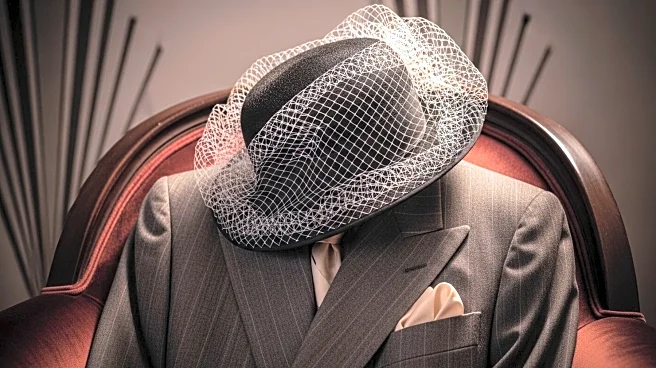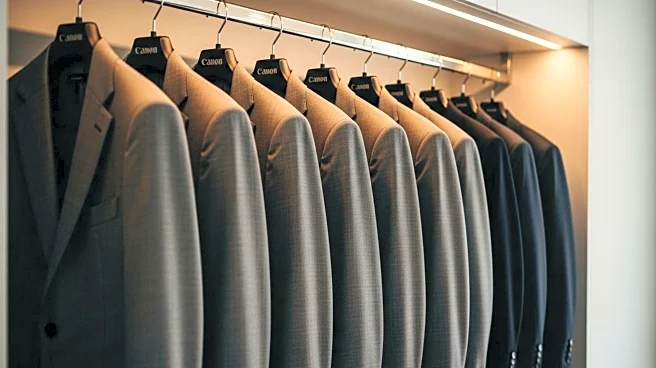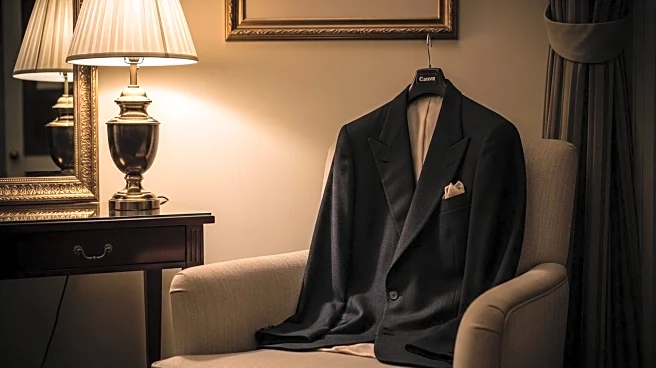What's Happening?
Actress Ever Carradine, known for her comedic roles, is taking on a more serious character as Kelly Ludlow, the press secretary in the television series 'Commander in Chief.' In this role, she is seen wearing all-American button-downs, suits, and cashmere sweaters, reflecting a more conservative fashion choice. Carradine, who is the daughter of actor Robert Carradine, has expressed her excitement about the role, stating that the script was compelling enough for her to join the project. The show, which features Geena Davis as President MacKenzie Allen, allows Carradine to explore a dramatic role, a departure from her usual comedic performances. During a WWD photo shoot, Carradine showcased spring's best new suits, which she describes as feminine and retro, suitable for a Hollywood setting.
Why It's Important?
Carradine's role in 'Commander in Chief' highlights the evolving portrayal of women in leadership positions on television. By adopting a more conservative and professional wardrobe, the show reflects a shift towards depicting women in powerful roles with authenticity and respect. This can influence public perception and inspire real-world discussions about women's representation in politics and leadership. Additionally, Carradine's transition from comedy to drama underscores the versatility and depth of female actors in Hollywood, challenging traditional typecasting and opening doors for more diverse roles.
What's Next?
In upcoming episodes, Carradine's character will undergo a transformation, prompted by a storyline where a strategist suggests a change in her appearance to boost confidence and sophistication. This will involve a new hairstyle and wardrobe, including a Chloé dress, marking a shift from her character's classic all-American look. This development may lead to further character exploration and plotlines that delve into the dynamics of image and perception in political settings.
Beyond the Headlines
The show's focus on fashion and image in a political context raises questions about the role of appearance in leadership and public perception. It highlights the ongoing conversation about the balance between professionalism and personal expression, particularly for women in high-profile positions. This could spark broader discussions about gender expectations and the pressures faced by women in leadership roles to conform to certain standards.
